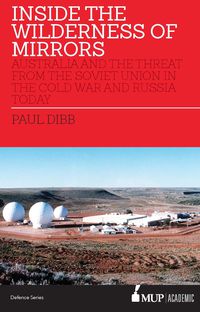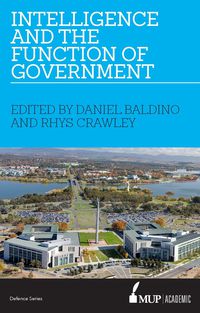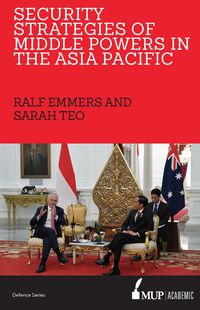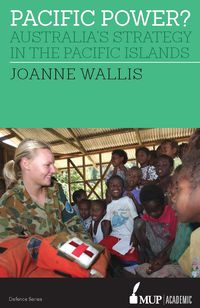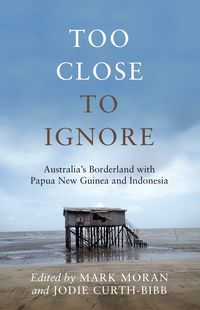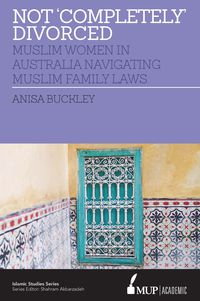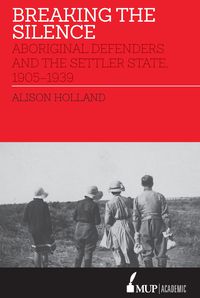←Back to Independent Ally
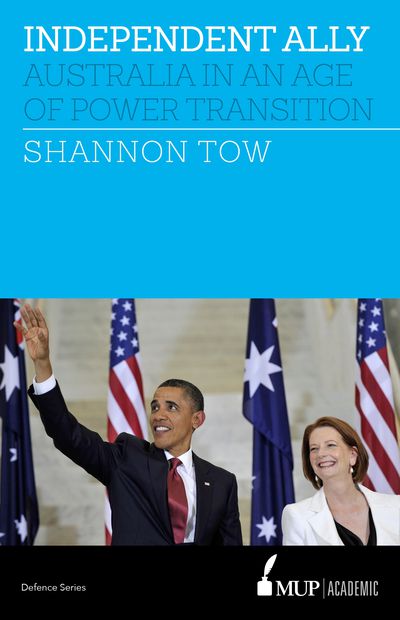
An extract from “Independent Ally”
In October 2003, United States President George W Bush and Chinese President Hu Jintao addressed two joint sittings of the Australian Parliament on successive days. This was an honour that the Australian Government had not previously extended to any leader other than a US president and demonstrated the growing status of the People’s Republic of China (PRC or hereafter China) in Australian foreign affairs. To then Australian Prime Minister John Howard, this event epitomised the success of Australia’s ‘foreign policy in building close relations with Asia while further deepening our already close relationship with the United States’. Commentators heralded it as signifying a new phase in Australian strategic policy, in which Australia was able to successfully build close ties with its traditional ally, the United States, and with China as the new rising power of Asia. The Howard Government effectively rebuilt the Sino-Australian relationship, following strained ties in 1996 after its public criticism of China for firing missiles near Taiwan and its political support for the United States’ deployment of two aircraft carrier battle groups in response. The Howard Government’s subsequent success in forging a close Sino-Australian relationship while simultaneously deepening the American alliance is frequently portrayed as one of that Government’s greatest policy achievements. What was surprising was the acclaim this achievement drew from academics and public commentators when, in fact, it was merely representative of a longstanding trend in Australia’s strategic policy.
Since Federation in 1901, Australian policymakers have often sought to develop a close relationship with a rising power while maintaining an alliance with a globally dominant power. They have done so despite the rivalry that usually existed between these powers. During the first part of the twentieth century, Australia forged a cooperative relationship with a strategically ascendant United States while maintaining its imperial relationship with Great Britain. It did so notwithstanding Anglo-American competition for influence in the Pacific and occasional British dissatisfaction with Australian overtures toward the United States. Since 1971, Australian policymakers have similarly sought to develop a cooperative and enduring relationship with a rising China, while concurrently seeking to preserve, and even strengthen, Australia’s alliance relationship with the United States. They have done so despite oscillating Sino-American relations during the same period.
Instances of engagement with a rising power, from within an alliance with a dominant global power, are not limited to Australia. In recent years, many US allies in the Asia–Pacific have been driven by political and economic imperatives to strengthen their relations with a rising China while also consolidating their defence cooperation with the United States. In Northeast Asia, the Republic of Korea (ROK) announced a ‘strategic cooperative partnership’ with China in 2008, while also extending the US–ROK alliance beyond the defence of Korea to ‘contribute to peace and prosperity at the regional and global level’. There have been similar trends in Southeast Asia. Thailand has strengthened its security cooperation with China in various ways, including through joint maritime exercises and weapons sales, but it has not done so at the expense of its alliance with the United States. Despite strained US–Thailand relations following the 2014 military coup, both countries have maintained core alliance activities, such as the co-sponsored military exercise Cobra Gold, and have re-established interaction among senior officials. While not formal US allies, Indonesia and Singapore have also sought to cultivate positive-sum relationships with Beijing and Washington. US junior allies and partners in the Asia–Pacific have generally sought to engage with a rising China, not as a precursor to realignment, but while preserving or intensifying their relationships with the United States.
These trends in Asia–Pacific countries’ foreign and defence policies are counterintuitive to longstanding theoretical assumptions in international relations. There is a dominant narrative in the international relations literature that a junior ally’s preoccupation with preserving the security benefits of an alliance with a dominant global power will exercise an overwhelming influence on its foreign and defence policies. Its efforts to preserve these benefits will compel it to lend political support to that power. This generally precludes it forging a cooperative relationship with a rising power, as the senior ally’s principal political and strategic contender for leadership.
These assumptions are prominent in the international relations literature on power transition and alliances, which are the bodies of work that deal most centrally with power shift in the international system and are grounded in the realist school of thought of international relations. Both of these literatures have reaffirmed these assumptions, despite their fundamentally different portrayals of how change in the international distribution of power affects the international system. ‘Power transition’ occurs when a rising power acquires sufficient economic and military power and diplomatic support among other countries that there is a transfer of leadership in the international system between the dominant power and the rising power. This is usually a protracted process and involves a long-term shift in power relativities, or ‘power shift’, between the dominant power and rising power that usually precedes a full power transition. The tendency of both the power transition and alliance literatures to focus on the major powers as the key protagonists of such change, however, has largely precluded comprehensive exploration of how an alliance with a dominant global power impacts smaller countries’ relationships with a rising power.
An exception is alliance theorist Glenn Snyder’s theory on alliance management, which sets out propositions on when an alliance will constrain a state from conciliating with an external power. However, these propositions are part of a general framework on intra-alliance management and are not contextually specific to power shift. An absence of systematic exploration of how an alliance with a dominant global power influences a junior ally’s relations with a rising power has led to assumptions about this influence — principally, that junior allies either align with a dominant global power or realign with a rising power — that have not yet been critically examined.
These same assumptions pervade recent commentary on the rise of China. Scholars analysing the impact of China’s rise on the Asia–Pacific security landscape typically posit that regional countries may have to choose, in future, between accommodating China’s rising power and preserving a vibrant relationship with the United States. In one of the most prominent studies on how China’s rise will affect regional order in the Asia–Pacific, China analyst Robert Ross argues that a bipolar security landscape will re-emerge as mainland continental Asian countries accommodate China and maritime countries continue to align with the United States. David Kang, a specialist on the international relations of Asia, offers a counterpoint, arguing that East Asian countries will adhere to hierarchic cultural practices and will defer to China as the dominant power in East Asia. Kang cautions that this will introduce tensions in these countries’ alliances with the United States. Both depictions suggest a fundamental tension between cultivating positive relations with a rising China and maintaining a robust American alliance.
That tension is also evident in some academic and public commentary about Australia’s strategic policy. Prominent Australian defence academic Hugh White has argued that the emergence of China as a strategic contender to the United States in Asia will present Australia with difficult choices. These could include choosing between China and the United States as an increasingly competitive Sino-American relationship emerges. White argues that the only way Australia can avert this choice is by encouraging the United States to enter into a regional power-sharing arrangement with China. Australian strategic studies expert Paul Dibb argues that, given the underlying weaknesses in Chinese military capabilities that will prevent it from emerging as a serious competitor to the United States for some time, it would be premature for Australia to abandon a strategy that neither accommodates nor balances Beijing.
This book does not refute the argument that an adversarial Sino-American relationship would render Australia’s strategic circumstances more difficult. However, the Australian historical experience does raise an interesting question. If junior allies like Australia are generally compelled to choose between supporting a dominant global power or a rising power, why and how have they sought — and often so successfully managed — to deepen relations with both? This is an important question at a time when several countries in the region, including Australia, are recalibrating their foreign and defence policies in response to the shift in economic and strategic weight toward the Asia–Pacific. The argument that junior allies face an imminent choice between engaging with a rising power and maintaining a strong alliance with the dominant global power, if not critically examined, could lead to a false understanding of whether and when such a choice may be necessary. This has implications for both our understanding of how power shift occurs as well as significant policy implications.
This book therefore adopts a fundamentally different departure point. Instead of forecasting when Australia may have to choose between its dominant global ally and a rising power, it explores why, for more than a century, Australia has been able to engage with rising powers from within its alliances to dominant global powers. It does so by exploring the following three subsidiary questions. To what extent were Australian decisions to engage with a rising power dominated by the senior ally’s preferences and policies? How did the alliance influence Australian policymakers’ decisions to engage with a rising power? And how did Australian policymakers reconcile engagement with a rising power with maintaining their country’s reputation for alliance loyalty? Answers to these questions are critical to understanding the relationship between the political obligations of an alliance and foreign policy toward a rising power, which are central to debates about whether Australia and other junior allies need to choose between a rising power and dominant global ally.
It is argued here that concurrent strong Australian ties with a dominant global ally and rising power have been possible because the relationship between alliance membership and engagement with a rising power has been more complex than generally assumed. This is for two reasons. First, in the Australian context, an alliance with the dominant global power and that power’s preferences have far from determined whether Australian policymakers decided to engage with a rising power. More significant were Australia’s independent interests toward rising powers. These interests were critically informed by whether Australian prime ministers believed rising powers could be conditioned over time to behave consistently with Australia’s strategic interests in regional order. This belief was premised on, but was not limited to, whether the rising power accepted the dominant global power’s regional presence and its alliance with Australia as a manifestation of that presence. This suggests that a junior ally can develop independent interests toward a rising power, which are consistent with its alliance but which are not necessarily determined by its senior ally’s preferences.
This is not to say that senior ally preferences have not had any bearing. For Australian policymakers, reconciling Australian interests in a rising power with alliance membership has not demanded total conformity with the dominant global ally’s policies or preferences. Australian prime ministers were confident to engage with a rising power provided the dominant global ally could be persuaded, over time, to acquiesce to Australia’s policies. The senior ally did not have to endorse all of Australia’s initiatives toward the rising power, but could not strenuously object to them. Australian policymakers’ judgements about the relative likelihood of such acquiescence were based on what they perceived as shared understandings of alliance contribution, linked to their interpretations of alliance purpose. Provided the alliance was not directed against the rising power, Australian policymakers generally believed that they could persuade the senior ally to acquiesce to their engagement strategy and were not overly concerned about jeopardising alliance benefits. This lower threshold for maintaining a dominant global power’s support (rather than compliance with its preferences) has meant that Australian policymakers have been able to maintain strong relationships with both powers.
